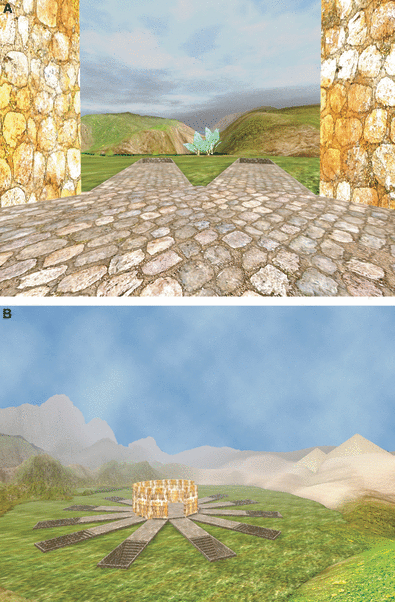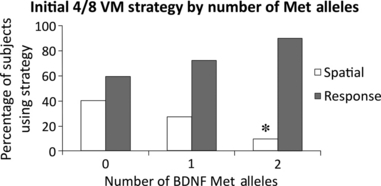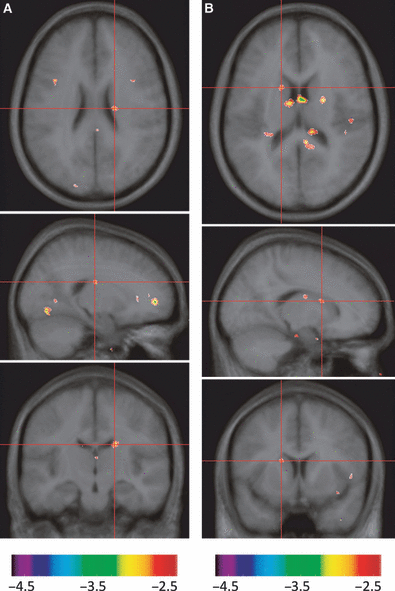The brain-derived neurotrophic factor Val66Met polymorphism is associated with reduced functional magnetic resonance imaging activity in the hippocampus and increased use of caudate nucleus-dependent strategies in a human virtual navigation task
- PMID: 21255124
- PMCID: PMC3084505
- DOI: 10.1111/j.1460-9568.2010.07550.x
The brain-derived neurotrophic factor Val66Met polymorphism is associated with reduced functional magnetic resonance imaging activity in the hippocampus and increased use of caudate nucleus-dependent strategies in a human virtual navigation task
Abstract
Multiple memory systems are involved in parallel processing of spatial information during navigation. A series of studies have distinguished between hippocampus-dependent 'spatial' navigation, which relies on knowledge of the relationship between landmarks in one's environment to build a cognitive map, and habit-based 'response' learning, which requires the memorization of a series of actions and is mediated by the caudate nucleus. Studies have demonstrated that people spontaneously use one of these two alternative navigational strategies with almost equal frequency to solve a given navigation task, and that strategy correlates with functional magnetic resonance imaging (fMRI) activity and grey matter density. Although there is evidence for experience modulating grey matter in the hippocampus, genetic contributions may also play an important role in the hippocampus and caudate nucleus. Recently, the Val66Met polymorphism of the brain-derived neurotrophic factor (BDNF) gene has emerged as a possible inhibitor of hippocampal function. We have investigated the role of the BDNF Val66Met polymorphism on virtual navigation behaviour and brain activation during an fMRI navigation task. Our results demonstrate a genetic contribution to spontaneous strategies, where 'Met' carriers use a response strategy more frequently than individuals homozygous for the 'Val' allele. Additionally, we found increased hippocampal activation in the Val group relative to the Met group during performance of a virtual navigation task. Our results support the idea that the BDNF gene with the Val66Met polymorphism is a novel candidate gene involved in determining spontaneous strategies during navigation behaviour.
© 2011 The Authors. European Journal of Neuroscience © 2011 Federation of European Neuroscience Societies and Blackwell Publishing Ltd.
Figures






References
-
- Apostolova LG, Dutton RA, Dinov ID, Hayashi KM, Toga AW, Cummings JL, Thompson PM. Conversion of mild cognitive impairment to Alzheimer disease predicted by hippocampal atrophy maps. Arch. Neurol. 2006;63:693–699. - PubMed
-
- Bath KG, Lee FS. Variant BDNF (Val66Met) impact on brain structure and function. Cogn. Affect. Behav. Neurosci. 2006;6:79–85. - PubMed
-
- Bohbot VD, Kalina M, Stepankova K, Spackova N, Petrides M, Nadel L. Spatial memory deficits in patients with lesions to the right hippocampus and to the right parahippocampal cortex. Neuropsychologia. 1998;36:1217–1238. - PubMed
-
- Bohbot VD, Iaria G, Petrides M. Hippocampal function and spatial memory: evidence from functional neuroimaging in healthy participants and performance of patients with medial temporal lobe resections. Neuropsychology. 2004;18:418–425. - PubMed
Publication types
MeSH terms
Substances
Grants and funding
LinkOut - more resources
Full Text Sources
Other Literature Sources
Medical
Miscellaneous

